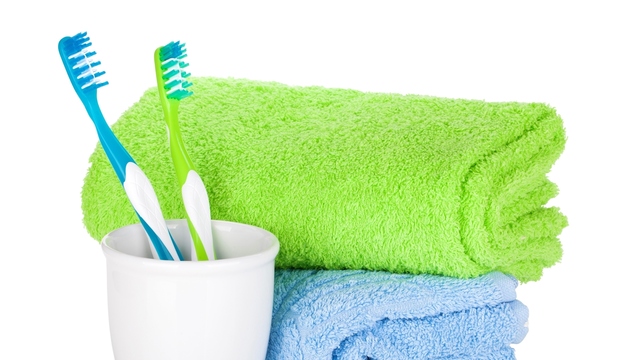 Evgeny Karandaev/PhotoSpin
Evgeny Karandaev/PhotoSpin
The toothbrush is the main tool we use to keep our teeth clean and to prevent dental and gum disease. Here are some interesting facts about that little brush and paste we rely upon so heavily for our dental care.
- The modern toothbrush was invented around 1780 by a man named William Addis who was in prison in England. The handles were made from bone, and the brushes were made from swine bristles. 1,2
- In 1938, boar bristles were replaced with nylon ones and toothbrushes began to be produced by DuPont de Nemours. The first nylon toothbrush was called Doctor West's Miracle Toothbrush.6
- Americans were not particularly concerned about dental health until they were influenced by the disciplined hygiene habits of soldiers in World War II. Afterwards, they became much more concerned about practicing good oral care.6
- A study by the Academy of General Dentistry reported that the average person only brushes for 45-70 seconds a day.5 Dentists recommend brushing for two minutes per a session.
- Women brush their teeth more often than men. 5
- The first electric toothbrush was sold by the Squibb (Bristol-Myers Squibb) company, in 1956 in Europe and in 1959 in the United States. 5
- Prior to the 1850s, "toothpaste" was typically found in powder form. “During the 1850s, a new toothpaste in a jar called a Crème Dentifrice was developed and in 1873 Colgate started mass producing toothpaste in jars.”2
- Colgate then began manufacturing toothpaste in a tube similar to our current day’s toothpaste tubes in the 1890s.2
- Until 1945, toothpastes contained soap. Soap was replaced by other ingredients in order to make the paste smooth. Sodium lauryl sulphate was often used to replace the soap and is a common ingredient in present-day toothpaste.2
- Fluoride was first added to toothpaste in 1956.4
- Some dentists suggest that you replace your toothbrush after you have the flu, a cold or another viral infection. The concern is that germs on the toothbrush bristles could lead to re-infection.5
- Always keep your toothbrush at least six feet away from the toilet, preferably in a drawer or your medicine cabinet. When the toilet is flushed, airborne particles can travel up to six feet and contaminate your toothbrush. 5
- Do not put a cap on your toothbrush as in may allow bacteria to grow by trapping in moisture.5
- Blue toothbrushes are the most popular color, followed by red toothbrushes. 5
- Americans spend over $850 million a year on toothbrushes. 5
- Americans throw away an average of 25,000 tons of toothbrushes per a year. To reduce this waste, manufacturers have started selling toothbrushes made out of recycled plastic. . 1
Sources:
1) Five Interesting Facts About Toothbrushes. Green Point Dental. Retrieved February 15, 2015.
http://greenspointdental.com/five-interesting-facts-about-toothbrushes
2) History of Toothbrushes. Colgate Professional. Retrieved February 15, 2015.
http://www.colgateprofessional.com/patient-education/articles/history-of...
3) How Products Are Made. Made How. Retrieved February 15, 2015.
http://www.madehow.com/Volume-2/Toothbrush.html
4) Tooth Be Told...Here are Some Fun-Filled Dental History Facts. Massachusetts Dental Society. Retrieved February 15, 2015.
http://www.massdental.org/content.aspx?id=1458
5) 10 Toothbrush Facts. Front Range Dental Center. Retrieved February 15, 2015.
http://www.frontrangedentalcenter.com/2012/01/toothbrush-facts
6) Who invented the toothbrush and when was it invented? The library of Congress. Retrieved February 15, 2015.
http://www.loc.gov/rr/scitech/mysteries/tooth.html
Michele is an R.N. freelance writer with a special interest in woman’s healthcare and quality of care issues.
Edited by Jody Smith



Add a CommentComments
There are no comments yet. Be the first one and get the conversation started!